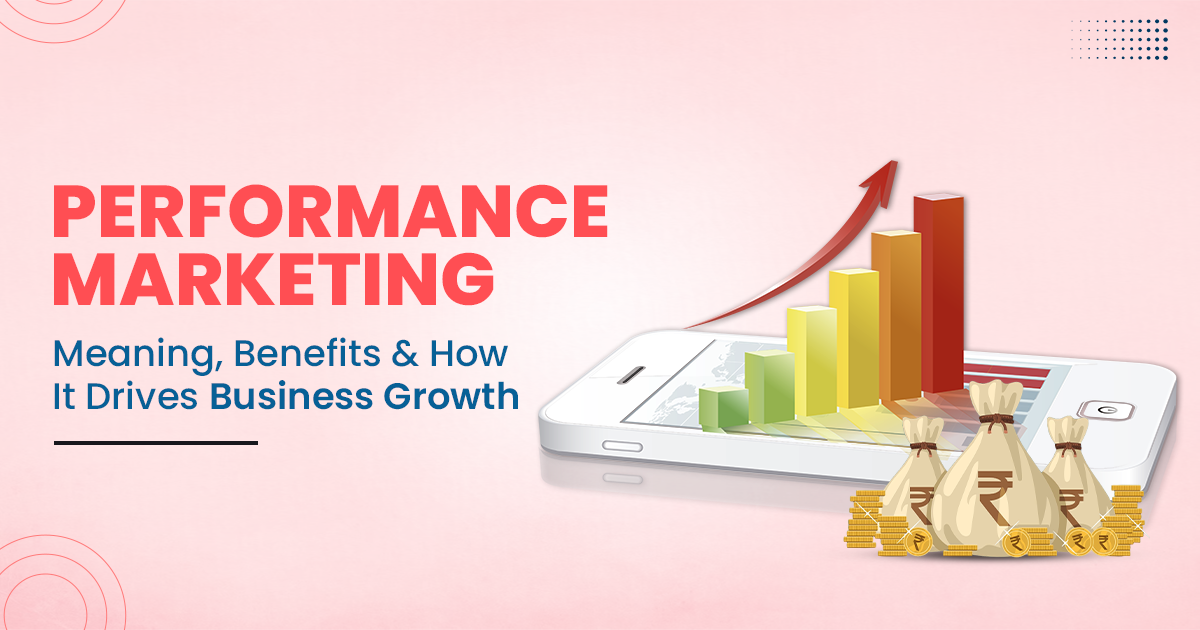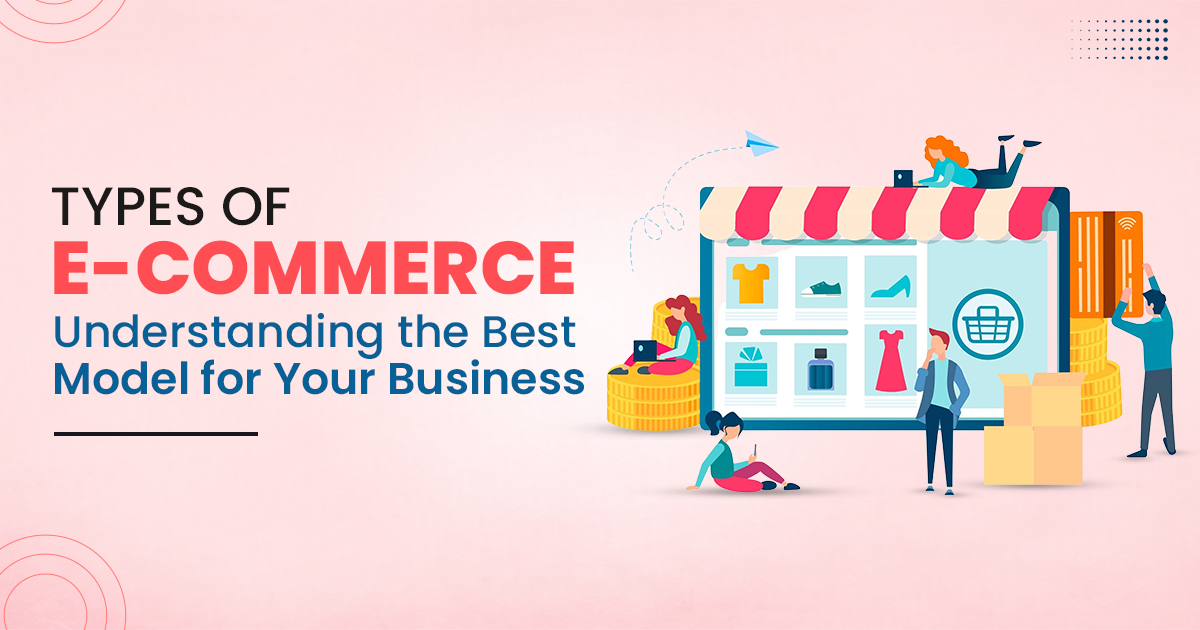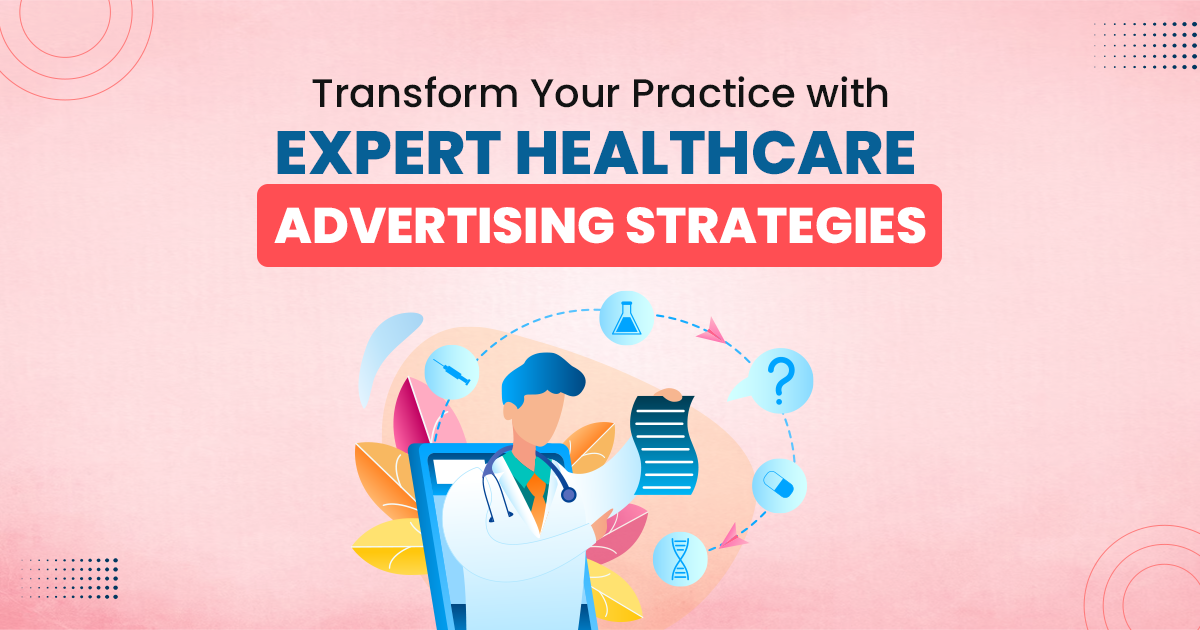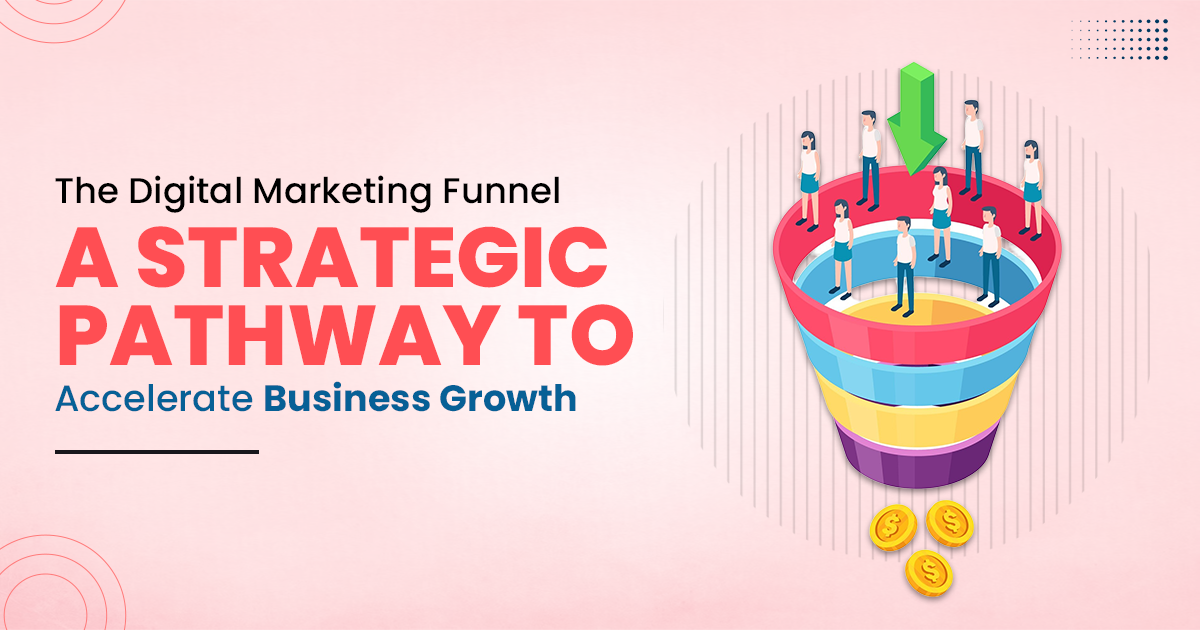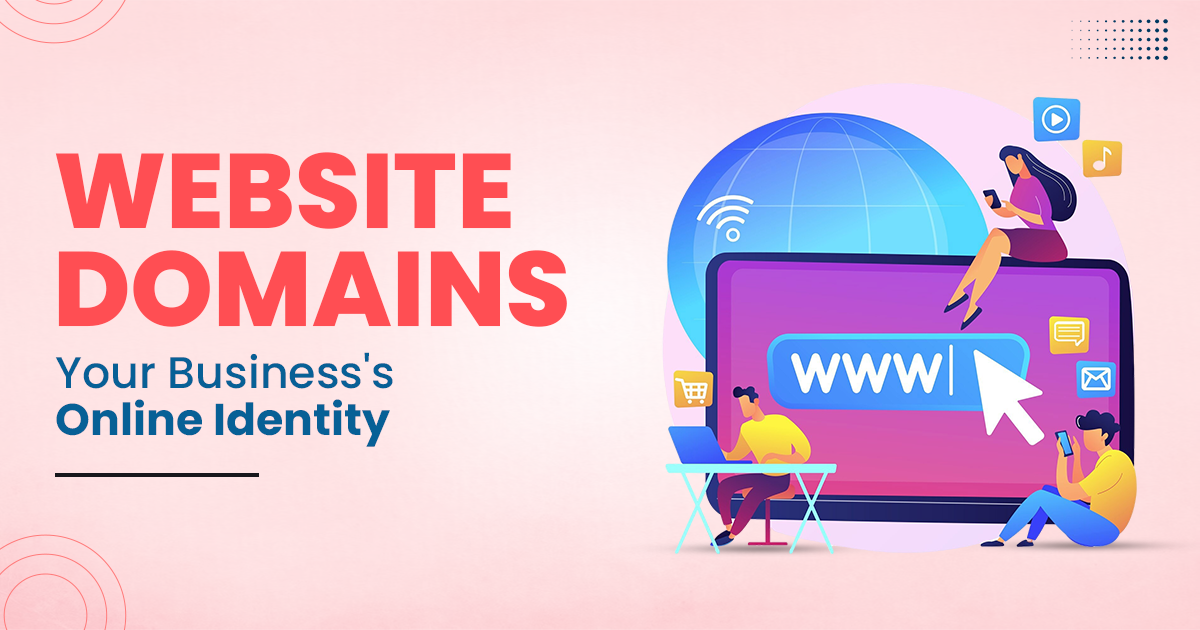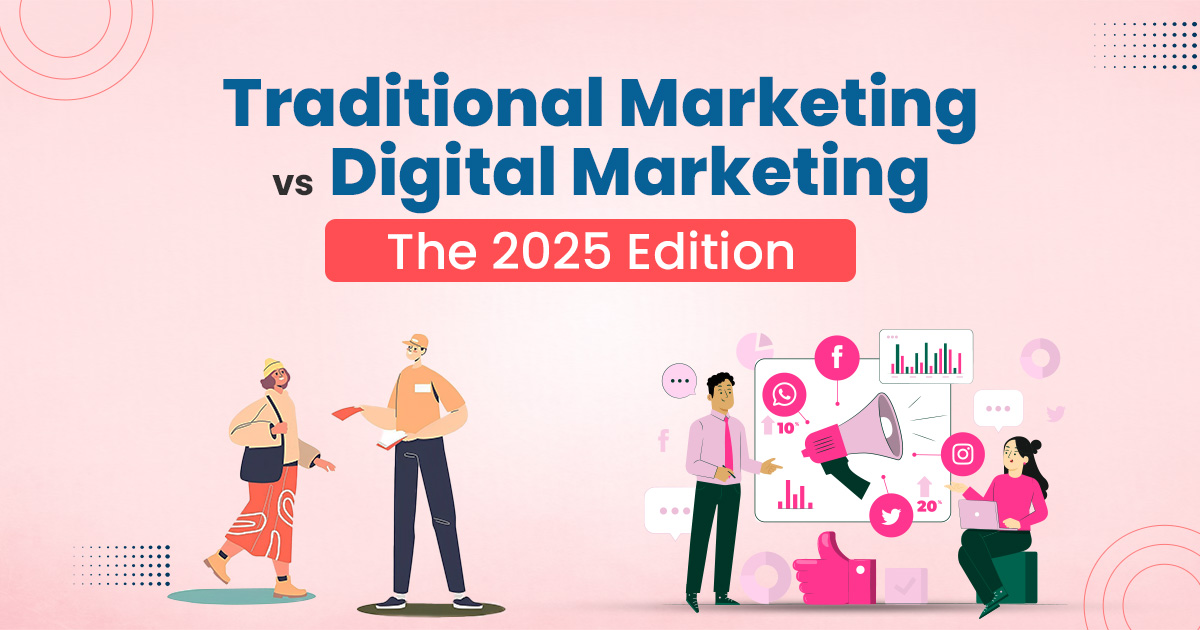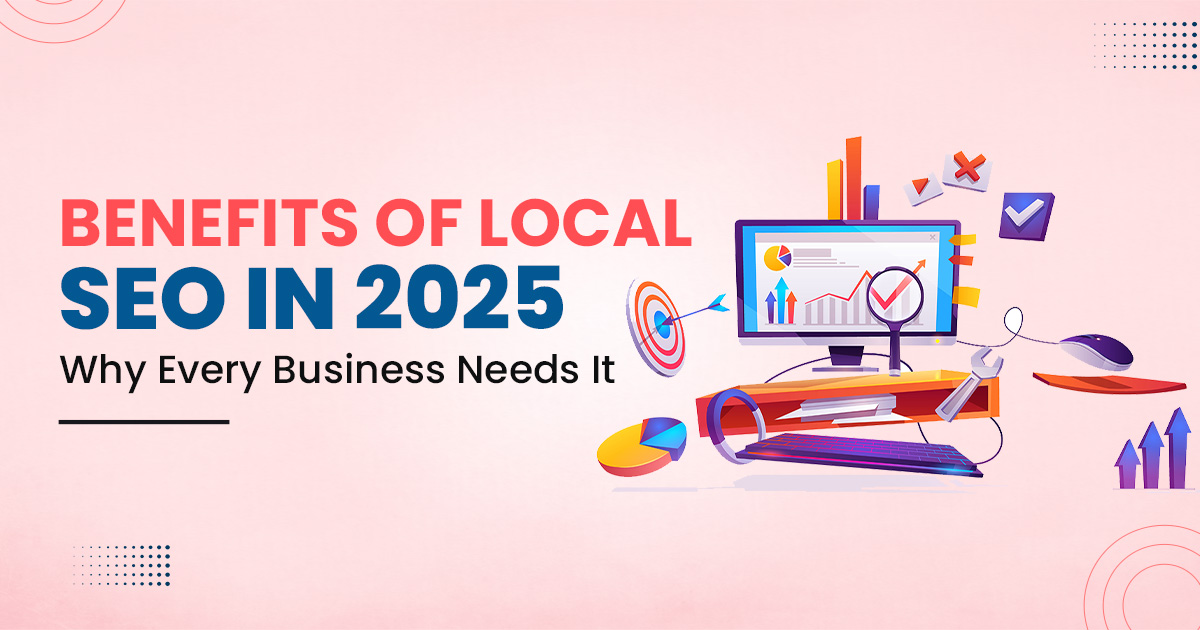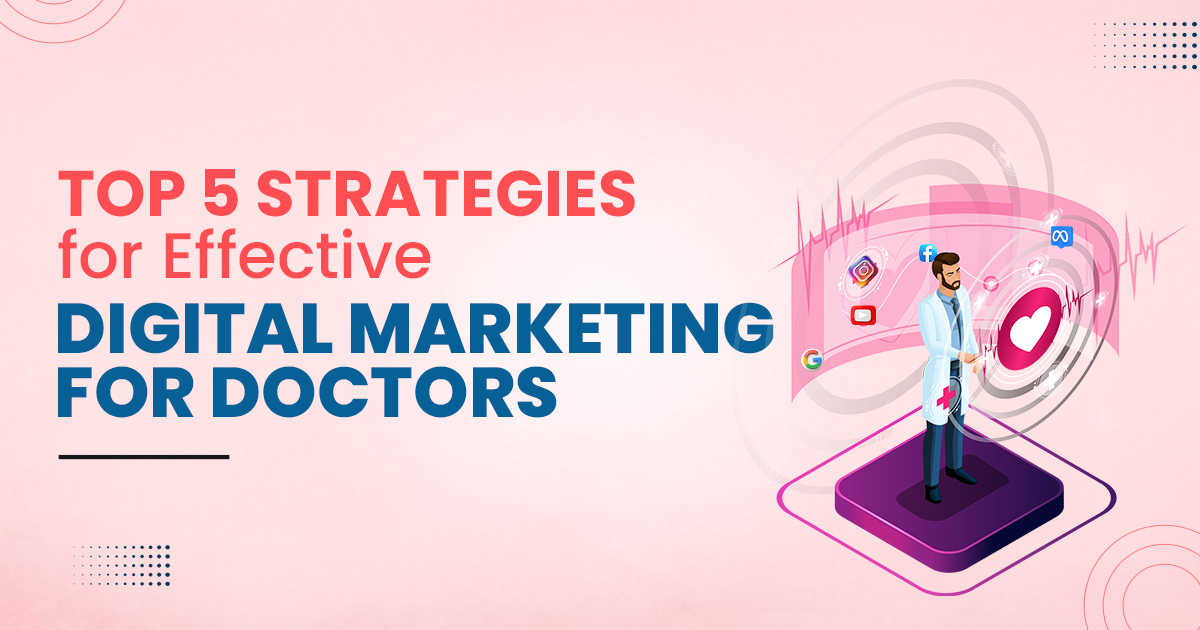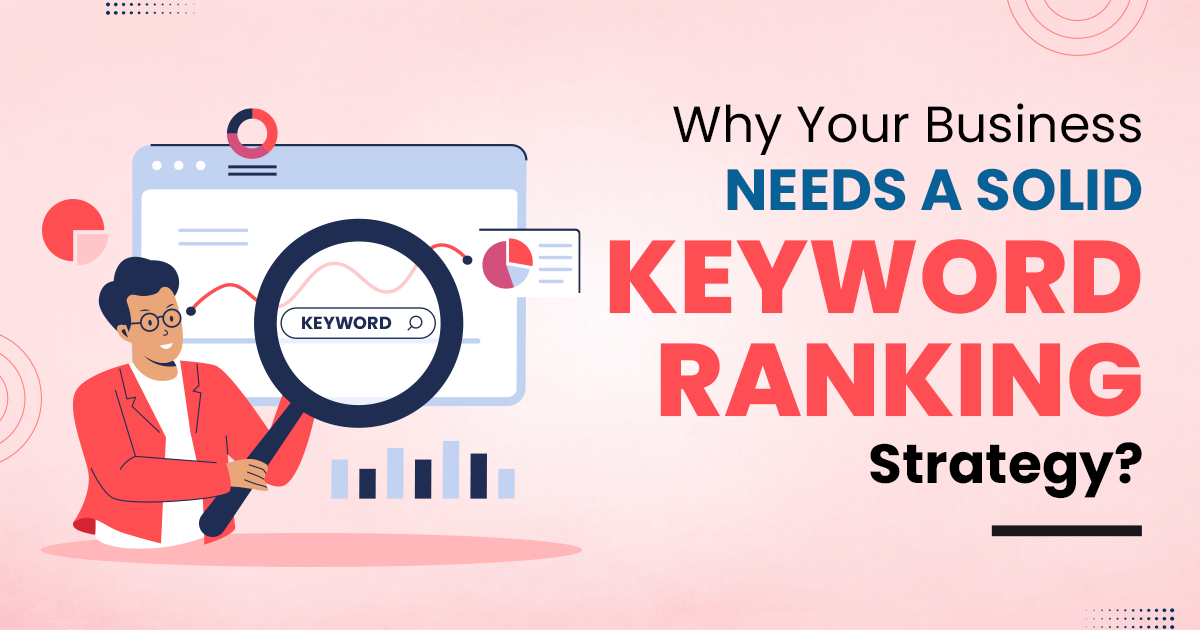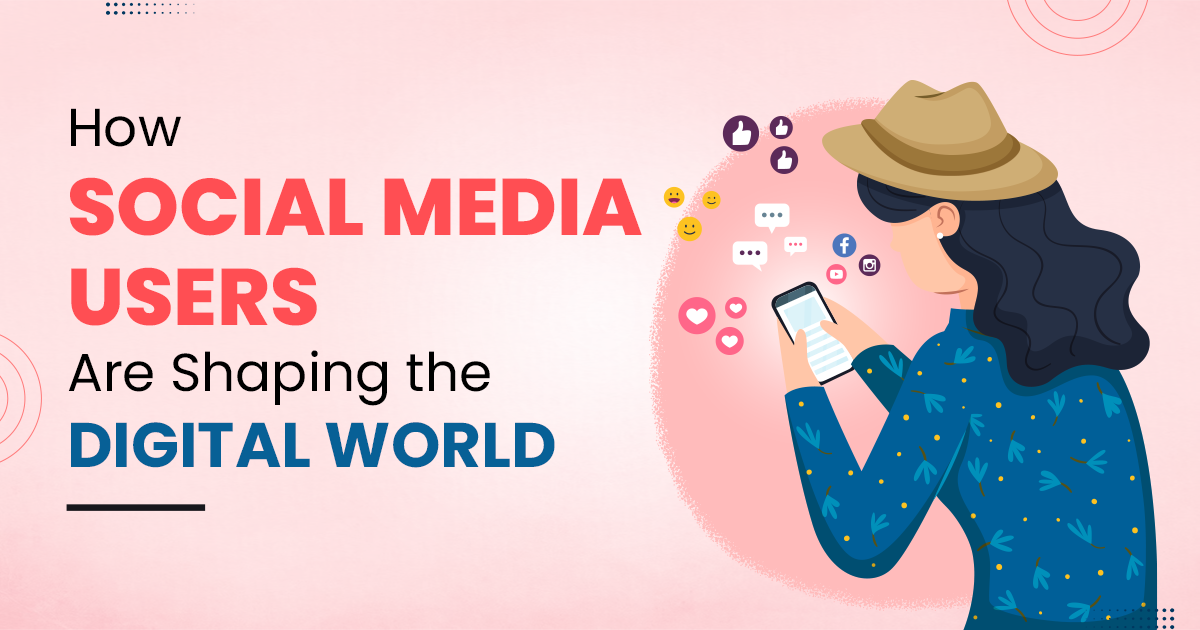Performance Marketing: Meaning, Benefits & How It Drives Business Growth In the competitive online world today, companies require a marketing strategy that promises outcomes. That is where performance marketing comes to the forefront. But what exactly is performance marketing, and how can it help your business? Let’s know. What is Performance Marketing? Performance marketing is an online advertising strategy that utilizes data, wherein the advertiser only pays for a specific action taken, such as a click, lead, or sale. It is measurable and ROI-based, making it fit for businesses looking for cost-effective advertising solutions. Important Advantages of Performance Marketing Cost-Effective: You only pay for results, maximizing ad spend.Measurable: Each action is measurable, enabling businesses to study ROI.Scalability: Scale up small based on performance data.Targeted Approach: Allows businesses to reach the correct audience with targeted approaches.Better ROI: Maximizes businesses’ returns with optimized campaigns. Performance Marketing Strategy: How to Make It Work In order to take on a successful performance marketing strategy, companies must focus on: Selecting the Right Channels: Utilize paid search, social media ads, affiliate marketing, and influencer partnerships.Setting Clear Goals: Establish specific KPIs such as conversions, leads, or sales.Utilizing Data Analysis: Track data in real time to improve campaigns.A/B Testing: Test different creatives, messages, and targeting to find out what is effective.Brand vs Performance Marketing: Important Differences Brand vs Performance Marketing: Key Differences Aspect Brand Marketing Performance Marketing Objective Build long-term brand awareness Drive immediate sales and conversions Measurement Hard to measure directly Highly measurable with data insights Timeframe Long-term strategy Short-term, results-driven approach Budgeting Fixed investment Pay-for-performance model Examples TV ads, social media branding PPC ads, affiliate marketing Both approaches are essential for a well-rounded marketing plan. While brand marketing creates awareness, performance marketing delivers measurable results. By understanding performance marketing meaning and implementing the right performance marketing strategy, businesses can drive conversions and achieve sustained growth. Whether you’re debating brand vs performance marketing, the key is to balance both for long-term success. What is performance marketing concept? Performance marketing is a pay-for-performance digital marketing model where advertisers only pay for definite actions, including clicks, leads, or sales. Is performance marketing same as SEO? No, SEO is about organic search rankings, whereas performance marketing is a paid advertising model where companies pay for measurable outcomes. What is market performance? Market performance is the degree to which a business, product, or marketing effort is doing well in sales, growth, and customer interaction. Is performance marketing PPC? PPC (Pay-Per-Click) is a component of performance marketing, but performance marketing involves other models such as affiliate marketing, influencer marketing, and cost-per-action (CPA) advertising.
Understanding the Different Types of E-Commerce to Build a Successful Business E-commerce has revolutionized the way businesses operate, opening up endless opportunities for growth. Whether you’re just starting out or already running an established brand, choosing the right e-commerce model is key to success. In this blog, we’ll break down the different types of e commerce, share their benefits, and offer examples to help you decide which model is the best fit for your business. What is E-Commerce? Simply put, e-commerce is the buying and selling of goods or services online. It allows businesses to reach a global audience, boost sales, and streamline operations. There are various e-commerce models to choose from, but the right one depends on your target market and what you’re offering. Different types of e commerce E-commerce can be categorized into different models based on the type of transactions involved. Here’s a quick rundown of the most common ones: Business-to-Consumer (B2C) What it is: B2C involves businesses selling directly to individual consumers.Examples: Amazon, Flipkart, Myntra. Best For: Retail businesses that want to sell their products directly to customers. Business-to-Business (B2B) What it is: B2B deals with transactions between businesses.Examples: Alibaba, IndiaMART. Best For: Wholesale suppliers, manufacturers, and companies providing bulk services. Consumer-to-Consumer (C2C) What it is: C2C allows individuals to sell directly to other consumers.Examples: eBay, OLX, Facebook Marketplace. Best For: People looking to sell second-hand or handmade items. Consumer-to-Business (C2B) What it is: In C2B, individuals offer products or services to businesses.Examples: Freelance platforms like Fiverr, Upwork. Best For: Freelancers, influencers, and independent contractors. Business-to-Government (B2G) What it is: This model involves businesses providing products or services to government agencies.Examples: Platforms for government contract bidding. Best For: Companies that work with public sector contracts. Choosing the Right E-Commerce Model for Your Business The right e-commerce model for you depends on several factors, including your industry, target audience, and investment capacity. Whether you’re thinking about a B2C, B2B, or C2C approach, it’s important to pick the one that aligns with your business goals. Related Services To help your e-commerce business grow, consider exploring our SEO Services, Social Media Marketing, Meta Ads Management, and Website Development. These services can help drive more traffic to your site and boost conversions. Conclusion Knowing which e-commerce model works best for your business is crucial for long-term success. Whether you’re a retailer, manufacturer, freelancer, or service provider, choosing the right model can fuel growth and profitability. Explore the various e-commerce options and pick the one that aligns with your business vision! WHAT ARE THE DIFFERENT TYPES OF E COMMERCE WITH EXAMPLES? A: The five main types of e commerce are B2C (Amazon, Flipkart), B2B (Alibaba, IndiaMART), C2C (eBay, OLX), C2B (Fiverr, Upwork), and B2G (government portals). WHAT IS B2C, B2B, C2C, AND EXAMPLES? B2C (Business-to-Consumer): Amazon, Myntra B2B (Business-to-Business): IndiaMART, Alibaba C2C (Consumer-to-Consumer): eBay, OLX C2B (Consumer-to-Business): Upwork, Fiverr WHAT IS E-COMMERCE AND EXAMPLES? E-commerce is buying and selling goods or services online. Examples include Amazon (B2C), Alibaba (B2B), and eBay (C2C). HOW MANY TYPES OF E COMMERCE ARE THERE? There are five major types: B2C, B2B, C2C, C2B, and B2G.
Transform Your Practice with Expert Healthcare Advertising Strategies In the competitive health care industry, reaching and retaining patients requires creative approaches. No other marketing opportunity can connect with your target audience as effectively as digital marketing. Want a healthcare advertising lead generation expert? Leverage Meta Ads and Google Ads to be game-changers for your practice. Here’s how expert strategies can transform your growth. What is Healthcare Advertising? Healthcare marketing is the promotional activity in medicine, health services, products, or facilities through various marketing channels. Digital channels like Meta Ads and Google Ads may provide healthcare providers with a means of reaching demographics to ensure that your message hits those who will need your services the most. A good medical advertisement builds awareness and trust, creating patient engagement. Concept of Healthcare Marketing Healthcare marketing attempts to gauge the needs of patients, thereby designing an effective campaign with them. This is not as simple as doing any ordinary marketing; it has empathy and is educative such that the patient always takes the ultimate decision. Transform Your Practice with Expert Healthcare Advertising StrategiesIn the competitive healthcare industry, reaching and retaining patients requires innovative approaches. Digital marketing offers unparalleled opportunities to connect with your target audience effectively. If you’re looking for a healthcare advertising lead generation expert, leveraging Meta Ads and Google Ads can be a game-changer for your practice. Here’s how expert strategies can transform your growth. What is Healthcare Advertising? Healthcare marketing is the act of promotion through medicine, health services, products, or facilities by several different marketing channels. Digital channels, such as Meta Ads and Google Ads, may even enable healthcare providers to target specific demographics in ways that your message reaches the very people who are most likely to need your services. A medical advertisement that has been carefully prepared does not just help build awareness; it can even create trust and patient engagement. The Idea of Healthcare Marketing Any marketing design is made to appeal to patients to understand their needs. But in healthcare, this marketing is more empathetic and also educative to make proper decisions by patients. It is through meta ads and powerful targeting capabilities by Google Ads, that you display your knowledge as well as reach out more to the potential patients. P’s of Hospital Marketing To develop a strong digital marketing strategy, consider the four P’s of hospital marketing:Product: Differentiate your practice by highlighting medical services, specialties, or treatments. Price: Build trust with transparent pricing and offer promotions to attract patients. Place: Ensure your online presence is strong, with easy-to-navigate websites and seamless appointment booking. Promotion: Leverage Meta Ads and Google Ads for targeted campaigns that deliver measurable results. Objectives of Healthcare Marketing Major Goals of Healthcare MarketingGenerate High-Quality Leads: Target active patients looking for healthcare services using strategic digital advertising. Improve Patient Retention: Keep in touch with current patients through remarketing and personalized communication. Educate and Empower: Share valuable content that positions you as a trusted authority in healthcare. Increase Brand Visibility: Use precise targeting and compelling ads to increase your online presence. Partner with a Lead Generation Expert Do you want to grow the size of your practice and reach a larger number of patients? Have a healthcare lead generation expert set up your campaigns for success. Partner with Meta Ads and Google Ads’ massive capacities and discover: The Power of Target Audiences Grab Cost Effectiveness by maximizing ROI and designing effective cost-campaign return campaigns. Increase the insights that will define the changes in strategy that need to occur. Change your healthcare practice today! Call us or e-mail us today. Discover how expert digital marketing services will let the best of you out toward your dream’s fulfillment. Success is just in a few clicks of that campaign away.
Digital Marketing Funnel: A Strategic Pathway to Accelerate Business Growth In the fast-paced world of digitization, today’s businesses need to keep up with the tides of change in online marketing so as not to fall behind. Among the best instruments in this pursuit is the digital marketing funnel. Knowing the funnel and using it profitably will increase the chances of customer acquisition, conversion, and growth. What is the Digital Marketing Funnel? Meaning of Marketing Funnel: This focuses on the route that a customer takes from awareness to action. In fact, marketing funnels are graphical illustrations that explain the steps a prospect undergoes while eventually interacting with the brand, thereby finally deciding to buy. It can also be a way for businesses to guide their leads in different stages of the conversion process, developing them into paying customers. Stages of the Digital Marketing Funnel The consumer funnel has a number of important stages that mirror the buyer’s journey. The stages differ a little depending on the model, but here are the common ones: Awareness – At the top of the funnel, potential customers become aware of your brand. This stage is crucial for making a strong first impression and offering valuable content that catches attention. Interest – After being aware, customers would be interested in your products or services. Informational content, educational blogs, or interesting social media posts can keep their interest going. Consideration – Customers now consider your product as a possible solution to their needs. Case studies, customer testimonials, and product demos can help push them closer to making a decision. Intent– That is the step where customers have a purchase intent. At this point, the purchase funnel narrows down, and you need to convince them further with personalized offers or discounts. Purchase– Here is where the customer makes the purchasing decision and seals the deal by becoming a paying customer. Loyalty– It brings the customer back after the purchase. Releasing that relationship through email marketing, customer support, and loyalty programs will make them come back for business. How Does the Marketing Funnel Affect Business Growth? Understanding and applying marketing sales funnel to your business is truly a game changer. You can know the intent of your prospect, so creating content and your marketing strategies speaks directly to them. That way, you would be increasing your conversion rate, nurtured for a long-term relationship, hence creating a high value of CLTV. The success would be guiding customers through each stage of the funnel without losing any leads while adjusting strategies appropriately. Businesses that look forward to optimizing their funnels require digital marketing services. Professional services are going to help with tools, strategies, and insights for optimizing funnel efficiency, making results measurable. ConclusionThe digital marketing funnel is an indispensable tool for modern businesses aiming to boost growth. By understanding the various stages and implementing targeted strategies for each phase, businesses can enhance their customer journey, increase conversions, and establish lasting relationships with their audience. Optimizing your funnel ensures that every lead is nurtured toward becoming a loyal customer, and with the right tools and strategies, you can unlock new opportunities for growth and success. WHAT IS THE DIGITAL MARKETING FUNNEL? Funnel digital marketing is the procedure of creating a structured process which guides potential customers through the various stages of awareness, consideration, and decision-making leading to conversions and customer loyalty. WHAT ARE THE SIX STAGES OF THE DIGITAL MARKETING FUNNEL? The six stages are Awareness, Interest, Consideration, Intent, Purchase, and Loyalty. WHAT ARE THE 5 LEVELS OF MARKETING FUNNEL? The five levels of a marketing funnel are: Awareness, Interest, Desire, Action, and Retention. WHAT IS FULL FUNNEL DIGITAL MARKETING? Full funnel digital marketing involves addressing all stages of the customer journey from top to bottom, ensuring comprehensive strategies to engage, nurture, and convert leads at every level of the funnel.
Website Domains: Your Business’s Online Identity Having a decent web presence in this digital age is no more optional for business anymore. It is the first step for presenting your brand’s identity online through which your digital storefront helps customers find you easily. This guide unpacks everything you should know about website domains and why they are crucial for businesses to thrive. What Is a Website Domain? A website domain is your brand’s unique address on the internet. It’s what customers type in their browser to reach your website, such as “www.yourbusiness.com.” This unique identifier not only directs traffic to your site but also establishes credibility and brand trust. Why Businesses Need a Professional Domain Brand Recognition: A domain that reflects your business name enhances memorability and trust.Professionalism: People will be more comfortable giving their personal domain to businesses than the general URL.Visibility on Search Engine: The appropriate choice of the domain enhances the search engine optimization so that it can be found by your target market.Customer Attachment: A branded domain is going to help the audience attach more with the business. Types of Domains for Businesses Top-Level Domains (TLDs): Best suited for business domains, it includes.com,.biz, and.store.Country Code TLDs (ccTLDs): Ideal for region-specific businesses, like .in for India or .us for the USA.Industry-Specific Domains: Options like .tech, .marketing, or .healthcare cater to specific sectors.Subdomains: Useful for creating separate sections, such as “shop.yourbusiness.com.” The Role of Hosting in Business Websites Once you’ve secured your domain, reliable web hosting is vital for smooth operations. Here are some top hosting providers for businesses: Hostinger: Affordable, with features tailored for small businesses.Bluehost: Great for eCommerce and content-based websites.HostGator: Budget-friendly with scalable solutions.SiteGround: Best for performance-based businesses.Hosting: Speed with advanced security.DreamHost: Good for private businesses. How BubbleWorld Can Help Your Business At BubbleWorld, we empower businesses by tailoring website development services. We will help you transform your online presence into a lead-generating machine from securing a professional domain to crafting engaging, high-performing websites. ConclusionInvesting in the right domain and hosting is a strategic move for any business looking to scale. A good online presence starts with a memorable domain that reflects your brand identity. With expert support from BubbleWorld, your business can achieve seamless online operations and customer engagement.
Traditional Marketing vs Digital Marketing: The 2025 Edition IntroductionToday, with the speed at which things change in the business environment, it has become a necessity to employ both traditional and digital marketing to connect and communicate with audiences. However, tools, strategies, and techniques for both differ dramatically. Now that businesses will keep changing into 2025, it’s high time that one understands the difference between traditional and digital media marketing and how it will influence their brand. What is Traditional vs Digital Media Marketing? It has been confirmed that traditional marketing is marketing directed through physical, and offline channels known as the customer reach method. They include print adverts, television and radio adverts, billboards, flyers, and direct mail. Traditional marketing builds brand awareness directly through the customers. Digital marketing involves online channels such as but not limited to websites, social media platforms, search engines, email marketing, and several digital tools that create direct access to messages to a targeted audience. Its benefits lie in real-time tracking and the resultant data-driven optimization. Which is an example of digital marketing? Example: Using SEO to maximize the visibility of the website on search engines like Google. The other example would be paying for ads on Google Ads or Meta Ads (Facebook/Instagram Ads) targeting a specific audience. Traditional vs. Digital Marketing Tools Traditional Marketing: Tactile, offline channels; Limited reach & tracking; Higher cost with limited flexibilityDigital Marketing: Online, digital platforms; Broad reach & real-time tracking; Lower cost with higher flexibilityHard to measure the ROI Easy to measure the ROI with analyticsOne-way and static communication Interactive, two-way communication What is the Difference Between Traditional and Digital Marketing Tools? The primary difference between traditional and digital marketing tools lies in how it reach the audience:Traditional tools involve television, radio, and print media that normally reach an extensive but non-targeted audience.Digital tools such as social media, email marketing, and content marketing allow companies to reach exact demographics and track engagement metrics in real time. Benefits of Digital Marketing in 2025 Business houses continue to enjoy the benefits of digital marketing over the old ones in the year 2025:Targeted Reach: It enables businesses to reach highly targeted audiences based on demographics, behaviors, and location. Generally, all these digital channels are cheaper, that is social media, SEO, and email marketing than traditional advertising. Interactive: The digital method encourages interaction with feedback and even direct communication from the customers in real-time.Real-Time Analytics: Brands have been able to follow their performance and, through using the likes of Google Analytics, track conversion, as well as to change the campaign even in real-time.Global Reach: This is where digital marketing opens the avenue for brands to get out of their local markets and get access to customers worldwide. Which Marketing Strategy would be appropriate for your business in 2025? It all depends on the business goals, budgets, and target market. It would then be either traditional or digital marketing. For example: Digital marketing will come out as ideal for small-scale businesses because of its cost-effectiveness and reach.Big companies can hence utilize both these forms of advertising to be more advertised and trusted.However, 2025 depicts a great transition towards this form of digital marketing mainly because of its flexibility towards the change in consumer trends and provision of real-time statistics. Conclusion: Digital Marketing vs Traditional Marketing – The 2025 Edition The contrast will be more visible between traditional and digital marketing by 2025. Traditional marketing has a much stronger sense of reaching audiences in a much more concrete and established manner; on the other hand, agility, cost efficiency, and measurable results are some aspects of digital marketing. Long-term results regarding customer engagement, brand visibility, and ROI will be expected when investing in the right digital marketing strategy going forward. BubbleWorld specializes in bringing the best of both worlds; our digital marketing services, including SEO, Meta Ads, social media marketing, web development, and software development, are designed to help your business thrive in the new digital world.
Benefits of Local SEO in 2025: Why Every Business Needs It With the current competitive digital landscape, a local presence is more important than ever. Local SEO makes all the difference to businesses looking to attract customers in their vicinity. For small shop owners to those managing chains, knowing the benefits of local SEO in your growth in 2025 is essential. What Local SEO Means Local SEO is maximizing your business’s online presence for more business locally. It’s the procedure in which your business appears locally on search results on Google, Bing, and other engines. Increasing the viewability of a business for a specified area increases the amount of foot traffic to that place. Advantages of Local SEO to Businesses Online VisibilityLocal SEO can bring your business to the top for local search queries, thus allowing prospective customers to find you. Enhanced Customer EngagementOptimized Google Business Profiles and local listings ensure that your customers can access your contact information, directions, and reviews very easily. Increased Traffic to Your WebsiteLocalized keywords drive quality traffic to your website, increasing the chances of converting visitors into customers. Increased CredibilityTrust with potential customers is established by showing up in local searches. Your business will show to be reliable and relevant to the needs of a customer. Local SEO services offer a high ROI compared to traditional advertising because it target users who are actively searching for your products or services. How Local SEO Services Work in 2025 The world of local SEO is constantly evolving, and 2025 is no exception. Here’s how local SEO services can help businesses thrive: Optimize Google Business Profiles: Your business information up to date ensures better local ranking. Localized Content: Creation of localized blogs, landing pages, and FAQs to resonate with your audience. Reputation Management: To encourage reviews online and build trust and authority. Mobile Optimization: Ensuring your website is mobile-friendly, thereby answering their search queries on-the-go Why Local SEO Will Matter in 2025 Local search is an essential tool for businesses because: 76% of people who look for something nearby on their phones go to a related business within a day. Mobile searches such as “near me” or “open now” are also increasing, making local SEO necessary to attract those users. With local SEO for businesses, you not only catch these high-intent users but also build a sustainable growth strategy for the future. WHAT ARE THE BENEFITS OF LOCAL SEO? Local SEO enhances online visibility, drives targeted traffic, improves credibility, and offers cost-effective marketing solutions. HOW EFFECTIVE IS LOCAL SEO? Local SEO is highly effective in capturing nearby customers actively looking for services or products, resulting in better ROI. Do I need to renew my license? Marks and devious Semikoli but the Little Blind Text didn’t listen. She packed her seven versalia, put her initial into the belt and made herself on the way. WHY IS LOCAL SEARCH IMPORTANT? Local search connects businesses with potential customers in their area, boosting foot traffic and sales. HOW DOES LOCAL SEO INCREASE PROFITS? Local SEO converts more because it targets high-intent users, hence increasing revenue and long-term business growth.
Top 5 Strategies for Effective Digital Marketing for Doctors Just like every other business, the health industry is also not an exception to the digital revolution these days. If you are looking to build patient trust and eventually grow your medical practice, doctors’ digital marketing is a need. This article discusses the best strategies to aid you in a successful medical doctor marketing campaign. A well-designed website is the foundation of doctor digital marketing. Make sure your website is user-friendly, mobile-responsive, and includes key features such as:Online appointment bookingPatient testimonialsClear service pagesA website ranking high in search engines can significantly boost your medical doctor marketing efforts. Leverage Search Engine Optimization (SEO) Ensure your clinic shows up in case the patient is searching for the “best cardiologist near me” or “pediatrician in [city].”. Here are some must-do SEO tips, Take the keyword in local places in content writing, say as “dentist in Mumbai.”Common blog posts relating to medical conditionsOptimize the Google business listing for Local SearchesBuilding trust and reliance is required more for any online marketing efforts toward doctors. Establish a Strong Social Media Presence These are great tools for reaching out to patients and promoting value-added content on social media platforms like Instagram, Facebook, and LinkedIn. Q: Which is the best social media for doctors? Instagram and LinkedIn are ideal for Doctor’s Digital Marketing. Instagram will be more attractive toward patient engagement, and LinkedIn will enhance professional credibility. Invest in Paid AdvertisingPaid advertising with Google Ads and Facebook Ads enables more exposure among a larger audience shortly. Utilization of Google Ads for targeting localitiesAdvertisements on Facebook about patients testifying about doctors and services they have received. Online paid promotions are also equally important for physicians’ promotion Engagements with Video Contents Video content gives that personal touch to your digital approach. You might use videos to explain complex medical procedures or to answer patients’ concerns by talking about your experiences as a doctor. Video marketing is an important segment of digital marketing that doctors undertake these days through websites like YouTube and Instagram. For more insights on Healthcare advancements, check out this detailed guide on Healthcare. ConclusionDigital marketing for doctors is no longer a choice; it is a necessity. Growing your practice and nurturing deeper relationships with more patients can be enhanced by website optimization, SEO, social media marketing, and even video content. Start your physician digital marketing journey today, and do not be left behind in this competitive healthcare industry! Can a doctor do digital marketing? Yes, doctors can do digital marketing by creating content and engaging with their patients on social media, thus using tools such as SEO and paid advertisements. It gives them a further reach and can help them be trusted online. What are the top 7 types of digital marketing? Search Engine Optimization (SEO) Social Media Marketing Content Marketing Email Marketing Pay-Per-Click Advertising (PPC) Video Marketing Online Reputation Management How do I market myself as a doctor? Market yourself by creating a professional website, optimizing your Google Business Profile, engaging on social media, and creating content that addresses patient needs. Which social media is best for doctors? LinkedIn is perfect for professional networking, while Instagram and Facebook are perfect for connecting with patients and promoting your practice.
Why Your Business Needs a Solid Keyword Ranking Strategy? In the modern digital world, a strategic keyword ranking strategy is what any online presence needs in order to be successful. Whether it is organic traffic, increasing visibility, or converting leads into customer loyalty, the right keywords resonate with your audience. The following blog will discuss some of the benefits of keyword ranking strategies and why using an expert is necessary in order to achieve top results. What is a Keyword Ranking Strategy? A keyword ranking strategy is the process of finding and optimizing specific search terms that can increase the chances of your website appearing in a search engine results page or SERPs. Essentially, this strategy follows:High-value keyword researchAnalyzing competitorsOptimization of optimized relevant contentTracking over time for ranking 5 Advantages of a Keyword Ranking Strategy 1. Enhanced VisibilityIt also brings your business in front of the target audience. Increased visibility would increase brand awareness and make your website the place to go in your niche. 2. Increase Organic TrafficA relevant focused keyword strategy would bring active searchers, the people who are actually searching for your products or services. The quality of traffic would thus be much better because the chance of conversion of leads will be higher. 3. Cost-Effective MarketingUnlike paid campaigns, organic keyword ranking efforts have long-term benefits without continuous ad spend. Thus, it is one of the most cost-effective digital marketing strategies. 4. Better User ExperienceKeyword optimization involves creating valuable user-friendly content. This helps in improving website usability; making it easier for visitors to navigate and find what they are looking for. 5. Measurable ROIWith these tools such as Google Analytics and Search Console, you can keep tabs on the performance of your keyword strategy to refine it for maximum returns. Why Do You Need an Expert for Keyword Ranking? 1. In-Depth ResearchExperts will use advanced tools and techniques to find keywords that are in line with the intent of your target audience and industry trends. 2. Competitive AnalysisKnowing what works for your competitors can help you craft a more robust strategy. Professionals keep you ahead in the SERPs. 3. Technical OptimizationFrom page speed to mobile-friendliness, experts handle the technical aspects of SEO that impact your rankings. 4. Content Creation and OptimizationAn expert ensures your content is not just keyword-rich but also engaging, authoritative, and valuable to your audience. 5. Ongoing Monitoring and AdjustmentsSearch engine algorithms change frequently. SEO professionals continuously track performance and refine strategies to keep your site at the top. The Need for SEO Services Crafting and executing a keyword ranking strategy is no small task. It requires expertise, time, and constant effort. If you’re struggling to rank higher or are unsure where to start, professional SEO services can make all the difference. Why Choose Our SEO Services? Custom Strategies: Solutions specific to your business needsSkilled Team: Team of experts with ten years of experience in SEO.Data-Driven Approach: Strategies based on analytics and proven results.Long-Term Success: Sustainable practice that gives long-term results. Take the First Step Towards Better Rankings! Don’t fall behind your competitors, who already invest in their keyword ranking strategy. Reach us today and let our experts from the SEO world get you ranking higher, increasing your traffic and the success of your business. Call or email us now to access the full potential of your digital presence!
How Social Media Users Are Shaping the Digital World The way people communicate, interact with each other, or share information is central today in the digital age; social media has become its core. With billions of users worldwide, Instagram, Facebook, and Twitter are social connection tools, but not only that-they represent business, education, or entertainment hubs. This blog discusses the key statistics regarding social media users and looks into statistics for Instagram users in the world, users of social media in India, and the usage pattern of social media as it is reflected through Google Trends. Who Are Social Media Users? Social media users are individuals or entities that take an active role on the platforms to connect, share, and also consume content. They start from teenagers who share their activities to professionals who network within LinkedIn and businesses that advertise from Facebook. The number has increased so much worldwide, making the space very important for engagement globally. Global Trends: Number of Instagram Users and Moving Forward Number of Users on Instagram WorldwideIt is the favorite platform globally with over 2 billion active users in 2024. It is mainly popular among the younger age groups and is widely used for sharing photos, videos, and stories. Social Media Users in IndiaIndia ranks at the top of social media penetration. In 2024, it already counts more than 600 million users. WhatsApp, Instagram, and Facebook are the most dominant market players, which can be attributed to growing mobile internet penetration and cheap handsets. Social Media Use in IndiaGoogle Trends shows the trend in searches for information about the use of social media in India is constantly increasing in recent years. The most popular activities are: Posting to Instagram and FacebookWatching reels, shorts, and live.Checking out popular hashtags and viral content. How Do People Use Social Media? Social media is far from casual chatting. This is how people use it. Personalization: Update on life events, personal opinions, or creative material.Business Promotion: Finding new customers, advertising their goods.Learning: Training through tutorials, courses, or learning materials.Connecting: Making connections with other people, professionals, and influencers. Most Used NetworksThe most in-demand social media platforms by user count in 2024 are the following: Facebook: 2.9 billion active users.YouTube: 2.5 billion users.Instagram: 2 billion users.WhatsApp: 2 billion users.TikTok: 1.5 billion users. 5 Fun Facts About Social Media Over 60 percent of the world is on social mediaMost users for Facebook are from IndiaVideo content receives shares 1200% higher than that of text and images combined.73% of the marketers claim that social media marketing has been effective for them.Average time spent on social media per day is 2 hours and 31 minutes. How Social Media Impacts Our Lives Positive Impacts:Connectivity: Keeping in touch with friends and family worldwide.Awareness: Getting real-time news and educational resources.Opportunities: Job opportunities, freelance gigs, and entrepreneurial ventures. Negative Impacts:Addiction: Too much screen time and decreased productivity.Mental Health: Anxieties, depression, and comparison stressPrivacy Risks: Malicious exploitation of personal data Reach out to us for expert social media marketing services!Are you ready to tap the power of social media for your brand? Our team of experts is at your service to craft customized strategies to help you grow your online presence, audience, and measurable results. From Instagram users in the world to digging into trends in social media usage in India, we can help you connect, engage, and thrive in this digital space. Contact us today and embark on your path to social media success! WHO IS A SOCIAL MEDIA USER? People using social media are persons or organizations who actively use networks to communicate, share, and consume information. WHAT IS THE BIGGEST SOCIAL NETWORK? The largest social network is Facebook with 2.9 billion active users, YouTube, and Instagram. WHAT ARE PEOPLE DOING ON SOCIAL MEDIA? Users apply social media to express their views, sell their business products, and network for more connections. It also offers education and entertainment. FACTS ABOUT SOCIAL MEDIA? Over 60% of the world’s population uses social media, 2) Video content generates high engagement, 3) India is one of the top markets for Facebook, 4) 73% of marketers consider it effective, 5) Average daily usage is over 2.5 hours. HOW DOES SOCIAL MEDIA AFFECT OUR LIVES? It connects us globally, raises awareness, and provides opportunities but also causes addiction, mental health issues, and privacy issues.

